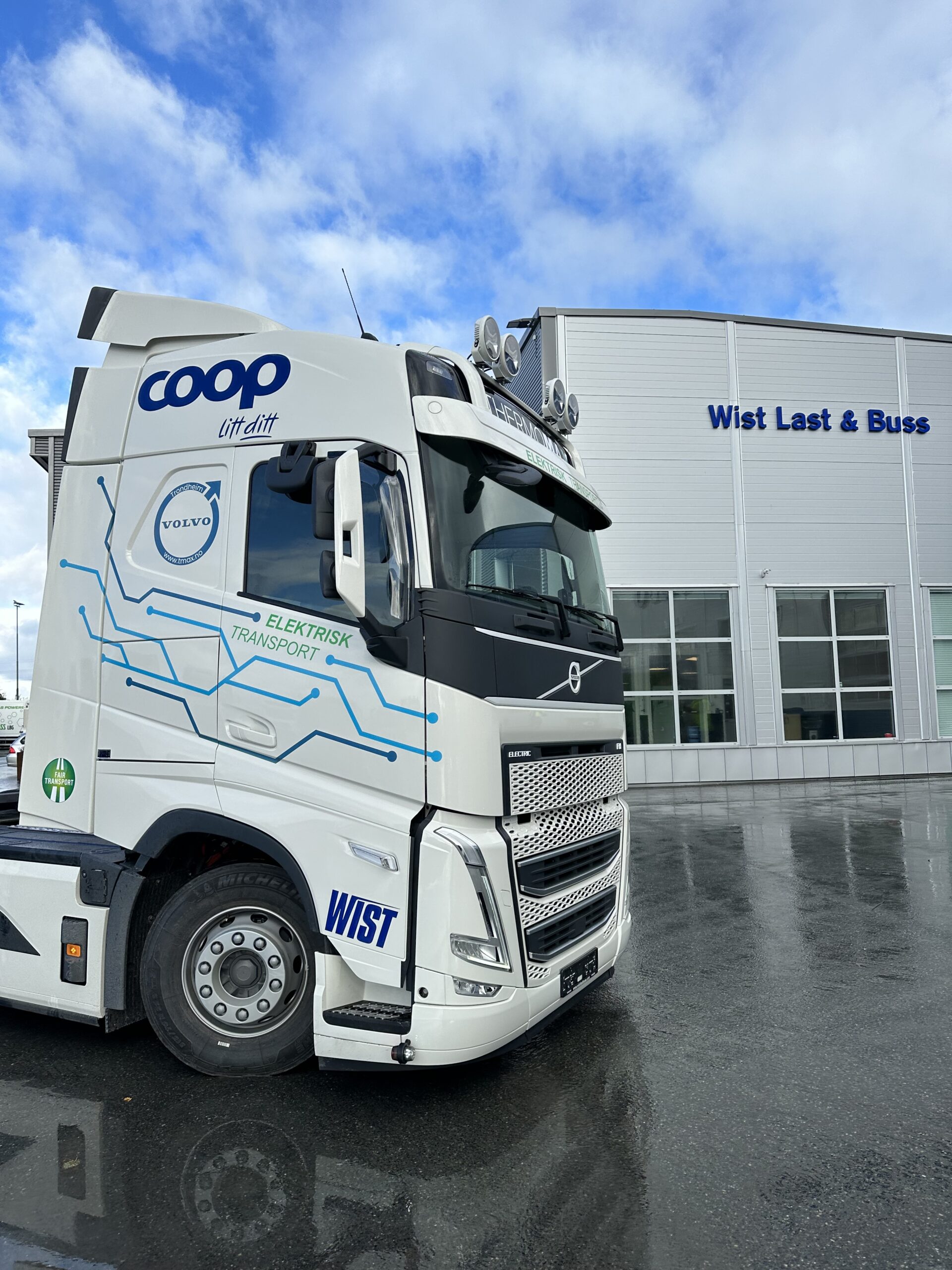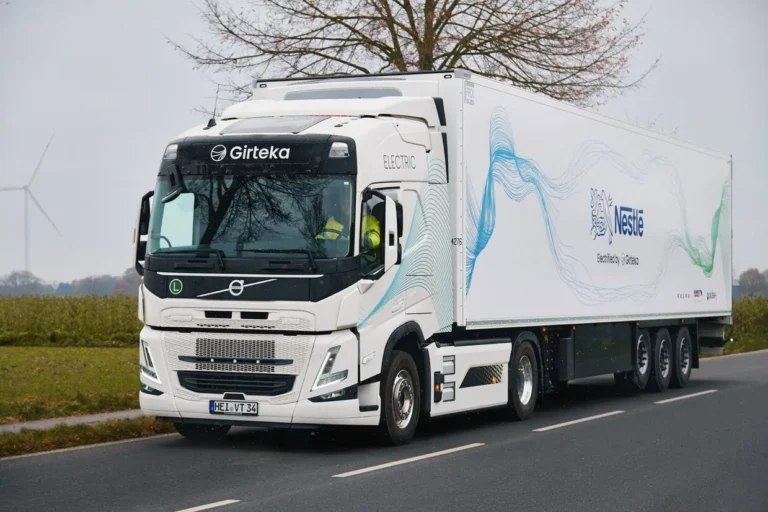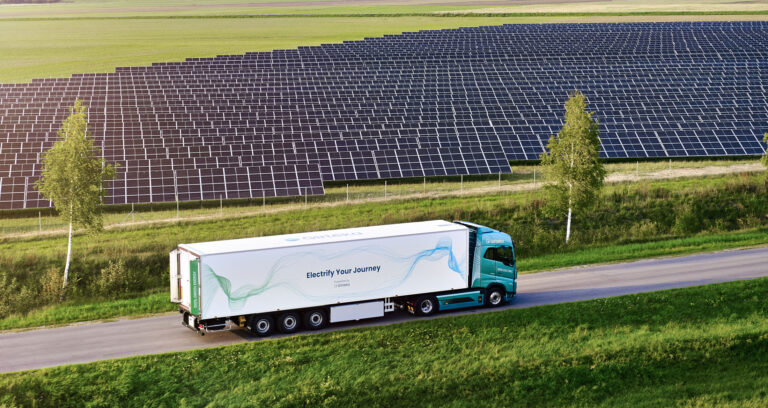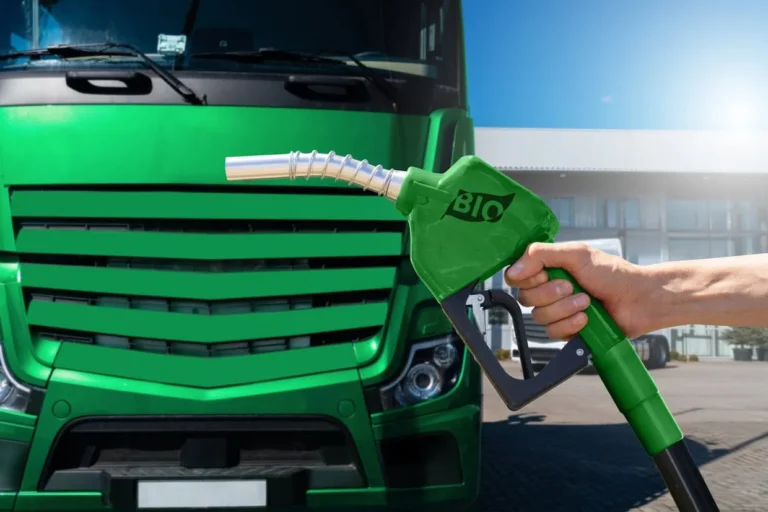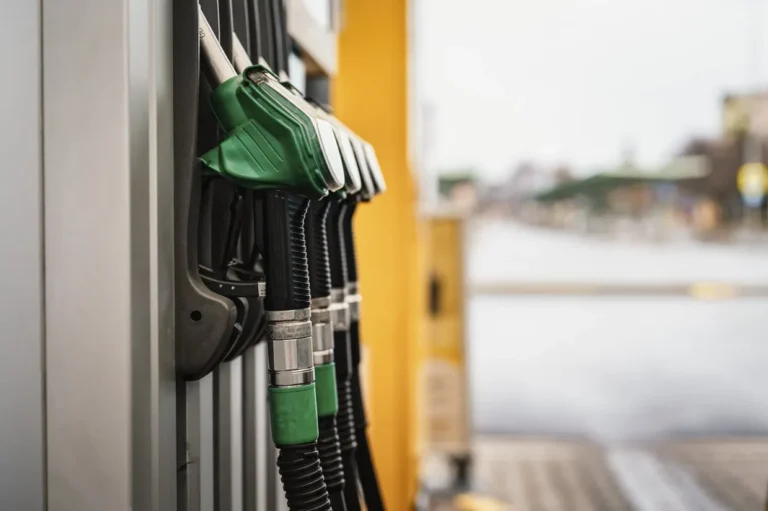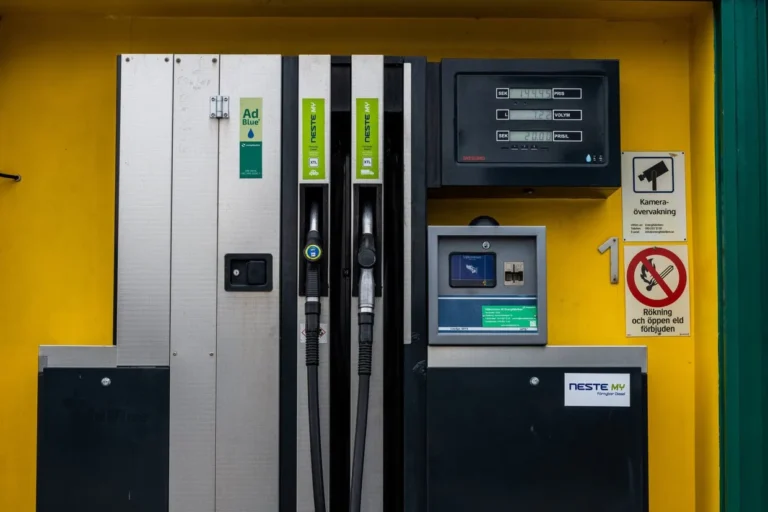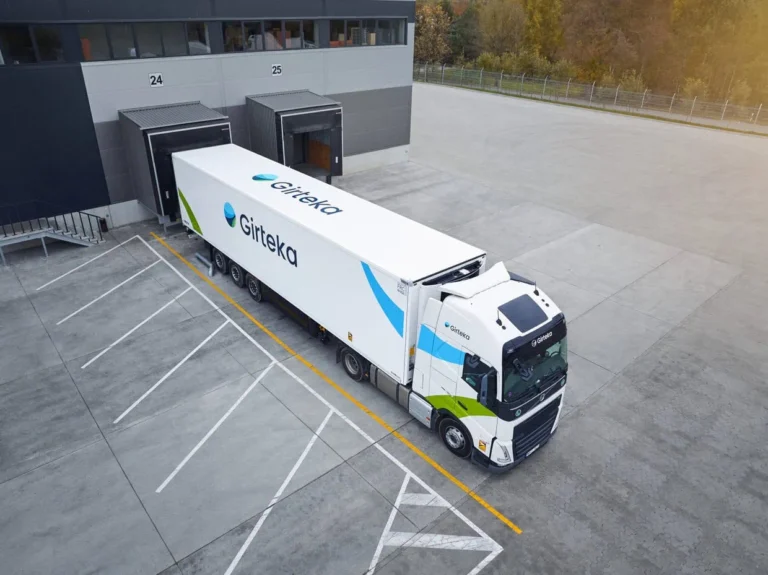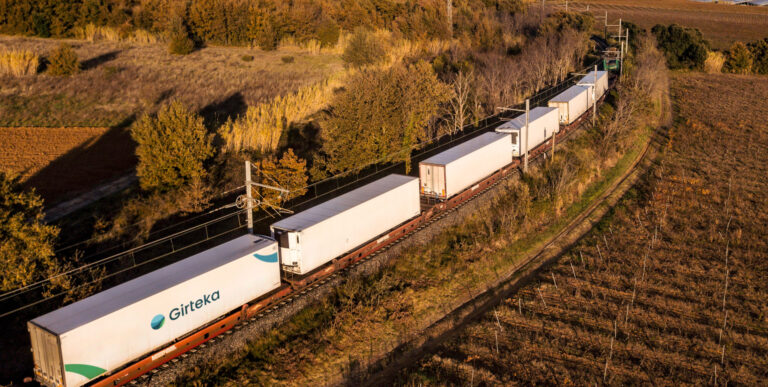The transition to electric vehicles is not just a trend; it is one of the solutions to shift towards sustainable logistics whilst the industry navigates through the transition period. As global discussions intensify around decarbonizing transport and optimizing supply chains, adopting battery electric heavy goods vehicles (HDVs) emerges as a practical and effective solution. While still in its early stages, the adoption of battery electric vehicles (BEVs) has already demonstrated potential of reductions in carbon footprints, providing a promising glimpse into a more sustainable future.
Simple but Effective Solution
Thermomax, a Norwegian transport company, part of the Girteka Group, provides heavy goods transportation services using Volvo’s BEVs for one of its domestic customers. The purpose of this solution is straightforward – to enhance the sustainability of logistics operations by replacing conventional diesel trucks with BEVs.
At the core of this project is a simple yet effective strategy: combining BEVs with intermodal rail transportation. The transportation services conducted by Thermomax in the Trondheim area of Norway involve trucks traveling approximately 150 km daily to maintain a steady flow of goods. The cargo is delivered from a railway station to a warehouse.
This approach showcases a practical commitment to reducing environmental impact of transport operations while maintaining efficiency by utilizing various forms of sustainable transport in joint creation with the customer.
Constant Data Monitoring
One of today’s advantages with modern trucks and advanced telematics is the constant monitoring of the truck’s performance. All data that can be analysed is stored and available online, providing opportunities to monitor cargo transportation for both logistics companies and their customers.
In this particular case of using a BEV, information about the engine’s power usage and more are being gathered during the operations. This data allows for an investigation of energy consumption levels based on distance, average parameters of consumed energy, propulsion used, or energy regeneration.
Throughout this project, the Volvo battery electric vehicle has already been travelling for five months, consuming a total of 12,600 kWh (excluding charging) while conducting deliveries. While daily exploitation of the truck differs due to specific circumstances, the system analyses average energy consumption based on 100 km driven.
From November 2023 to March 2024, the average energy consumption fluctuated around 150 kWh per each 100 km. The energy consumption varies with the temperature and on the whole year the energy consumption is expected to be lower on average than for the winter period. Throughout the total of 330 hours of driving at an average speed of 42 km/h and using cruise control at the level of more than 30%, the BEV covered more than 8,000 km.
“At Volvo, we believe in the power of collaboration to advance electric truck technology and enable our customers to electrify their transport operation. Working closely with logistics companies like Girteka Group allows us to get feedback that is crucial for improving our electric vehicles. This partnership approach ensures that we understand the needs and challenges of the industry, enabling us to develop more efficient and sustainable transportation solutions together,” says Stefan Widlund, Electromobility Director at Volvo Trucks.
Real Environmental Effect
While the current usage of electric trucks is still primarily limited to domestic transport, mostly due to infrastructure challenges, the real environmental effect can be easily calculated. However, the calculation depends on various factors, including the energy source for the electricity, ways of truck utilization, or weight of loads.
Within this example, the transition to BEVs has resulted in a reduction of 6.2 tonnes of CO2 over just a few months. This figure represents a clear, measurable benefit of adopting electric vehicles in terms of reducing greenhouse gas (GHG) emissions.
“We already see in practice the positive environmental impacts of using electric trucks. Scaling up these initiatives is crucial, and it requires a deep understanding of the challenges involved. By continuously analysing our experiences and sharing the benefits through co-creation with all partners in the Supply Chain, we aim to demonstrate to our customers the real advantages of transitioning to battery electric vehicles. This approach is not just about improving our operations; it is about leading the way in sustainable logistics for the entire industry,” summarizes Mark Mulder, Chief Commercial Officer at Girteka.
While individual effects can still be discussable, the scale makes a difference. Taking into consideration that more than 6 million trucks are currently circulating in Europe, even a small step like this can make a difference. The shift to electric heavy goods vehicles is a crucial step towards a sustainable future in logistics.
